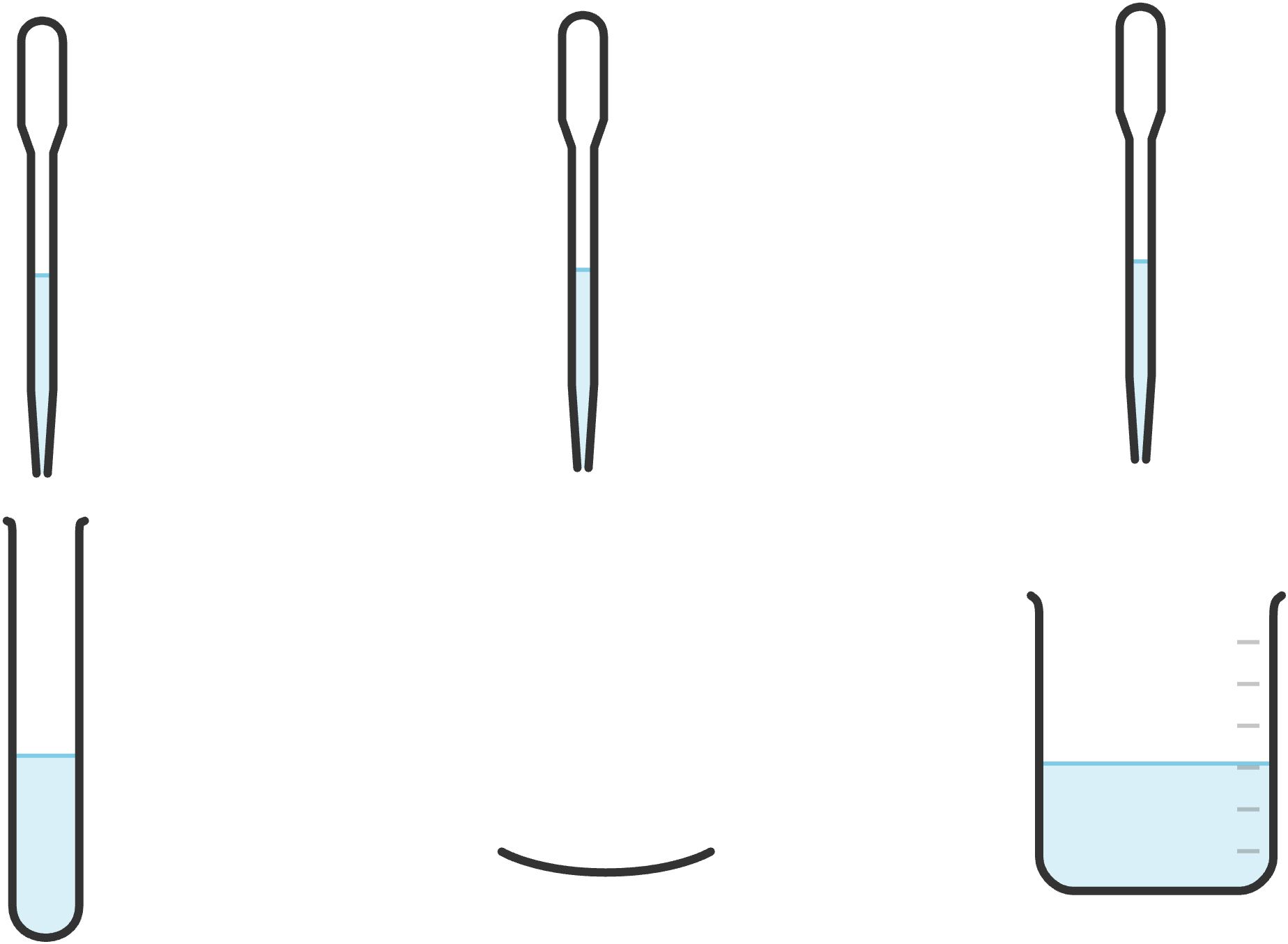Part 5: Organic Laboratory Techniques
15 Small-Scale Chemistry
When performing an experiment for the first time, it is always a good idea to do the experiment on a small scale. This will give you some idea of what to expect, and should anything unforeseen happen, i.e., an accident, it is much easier to contain small amounts of chemicals. Small-scale experiments are safer, produce less waste, and are therefore preferred if possible. Obviously, you will not be able to do all your work on the microscale, since it is very difficult to do quantitative measurements on a small scale. However, microscale work is very useful when you want to see what will happen, e.g., to see if a precipitate will form, or a gas be evolved, etc.

The pieces of equipment used for most microscale work are the test tube, watch glass or beaker and the plastic pipettes discussed in the laboratory equipment section. For semi-quantitative purposes the pipettes can be used to deliver a constant volume by marking a point on the stem of the pipette. If the pipette is then filled to this level each time, even though you do not know what the volume contained in the stem is, you will be able to control the relative volume of each solution that you mix (e.g., 2 pipette volumes of NaOH per 1 pipette volume of H2O).
One drawback to using microscale techniques such as these is that it is difficult to heat the test solutions. If you find that this will be necessary, you will have to scale up your reaction perhaps to a test tube scale where you will be dealing with 1–2 mL instead of drops of solution. Material can be heated in a test in a water bath. You should always heat test tubes whilst pointing the opening away from yourself or any other person working in the lab.
Small-scale chemistry is also considered more green or environmental friendly because it reduces waste, improves energy efficiency, and is more cost-effective. Working on a smaller scale often means working with less hazardous materials and lower quantities, which can reduce the risk of accidents and exposure to hazardous substances.
Note: The majority of this chapter has been adapted from the CEM 161/162 manual: Cooper, M. M. et. al. Cooperative Chemistry for Michigan State General Chemistry Laboratories, 2019.

